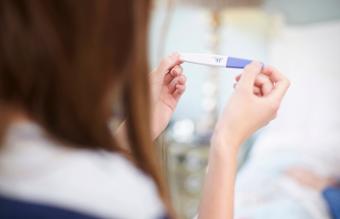
As you get older and your ovaries get smaller, your fertility decreases. Small ovaries have reduced reproductive function because they have fewer follicles and eggs remaining. Women age 35 and older are particularly at risk for infertility as their ovaries get smaller.
Ovarian Size, Follicles, and Fertility
Infertility specialists consider ovarian size an important predictor of your ability to get pregnant. In a University of Edinburgh study published in 2012 in Obstetrics and Gynecology International (OGI), the authors note the size (volume) of the ovaries reflects the number and fertility potential of the follicles that remain (ovarian reserve).
Small Ovaries, Fewer Follicles
Your ovaries get smaller from puberty to menopause because they lose their follicles and eggs. According to a 1999 article in an Oxford University journal, Human Reproduction Update, small ovaries have fewer immature (non-growing) follicles. These follicles have limited response to your own pituitary reproductive hormones or to fertility ovulation drugs. Thus, they are less capable of:
- Normal growth (folliculogenesis) and hormone production
- Egg maturation and ovulation
If your ovaries are small and contain few early follicles on ultrasound, and your pituitary follicle stimulating hormone (FSH) level on day three of your menstrual cycle is high, you may have difficulty getting pregnant.
Ovarian Measurements and Fertility
Based on data from the Human Reproduction Update (HRU) article, the average length of each ovary is:
- During the reproductive years (age 15 to 44): Three to five centimeters
- During the perimenopause (age 45 to 50): One and a half to two and a half centimeters
You will have more trouble conceiving if your ovaries are about two and a half centimeters or less in length.
Ovarian Volume
In practice in 2016, fertility specialists measure three dimensions of an ovary by transvaginal ultrasound - length, height and thickness - to calculate the volume of each ovary. According to the HRU review, the average volume of each ovary is:
- In the reproductive years: 18.3 cm³
- At menopause: 8 cm³
- Post menopause: 2.2 cm³ (15 years after).
The authors note fertility is significantly reduced when the volume of each ovary is 3 cm³ or less.
IVF Observations
Much of the observations on the effect of small ovaries on fertility comes from women undergoing in vitro fertilization (IVF) or other assisted reproductive technology (ART) procedures.
According to the HRU reference, women with ovaries less than 3?cm³ before an IVF cycle have:
- Poor response of the follicles to fertility drugs - failure to grow and increase estrogen output
- More than a 50% risk of cancelled IVF cycles before egg retrieval due to poor follicle and egg development
The women who are able to continue the IVF cycle need more fertility drugs to stimulate the ovaries, and fewer eggs are retrieved than normal. If IVF fails to overcome your obstacle of small ovaries, you may have to consider other options, such as donor eggs from someone younger, or adoption.
Ovarian Aging and Fertility Rates
In a study published in 2010 in the journal PLOS One, the Edinburgh University scientists estimated the average number of immature (non-growing) follicles remaining in each ovary by age from the volume of each ovary. Beginning with about 300,000 at puberty, according to the study, the average percentage of follicles remaining in the ovaries is as follows:
- Age 30: 12%
- Age 37: 5%
- Age 40: 3%
- At menopause (age 50-51): Less than 1% - only about 1,000 follicles remain, corresponding to a volume of 3 cm³ for each ovary
The natural, steady loss of follicles and volume of the ovaries accelerates at age 37 and is even greater beginning at age 40.
Decrease in Fertility Rates With Age
According to a 2013 Human Reproduction Update review on ovarian aging, because of the loss of follicles and volume of the ovaries with age, compared to women age 20-24, fertility rates decrease as follows:
- Age 25-29: 6%
- Age 30-34: 14%
- Age 35 -39: 31%
There is an even greater decline in fertility after age 40 until menopause because of the accelerated loss of follicles at that age.
Other Causes of Small Ovaries
In addition to the natural loss of follicles and the decrease in the size of the ovaries with age, the following can result in small ovaries:
- Premature ovarian insufficiency causing early loss of follicles
- Infection or inflammation of the ovaries
- Removal of part of the ovary during previous surgery
- Chemotherapy or radiation
Fertility Evaluation
Small ovaries have fewer follicles and eggs and reduce your ability to get pregnant. See your gynecologist or a fertility specialist for an evaluation if you are concerned about the size or function your ovaries. Don't delay if you are age 35 or older, or your menstrual cycles are becoming shorter or irregular.







